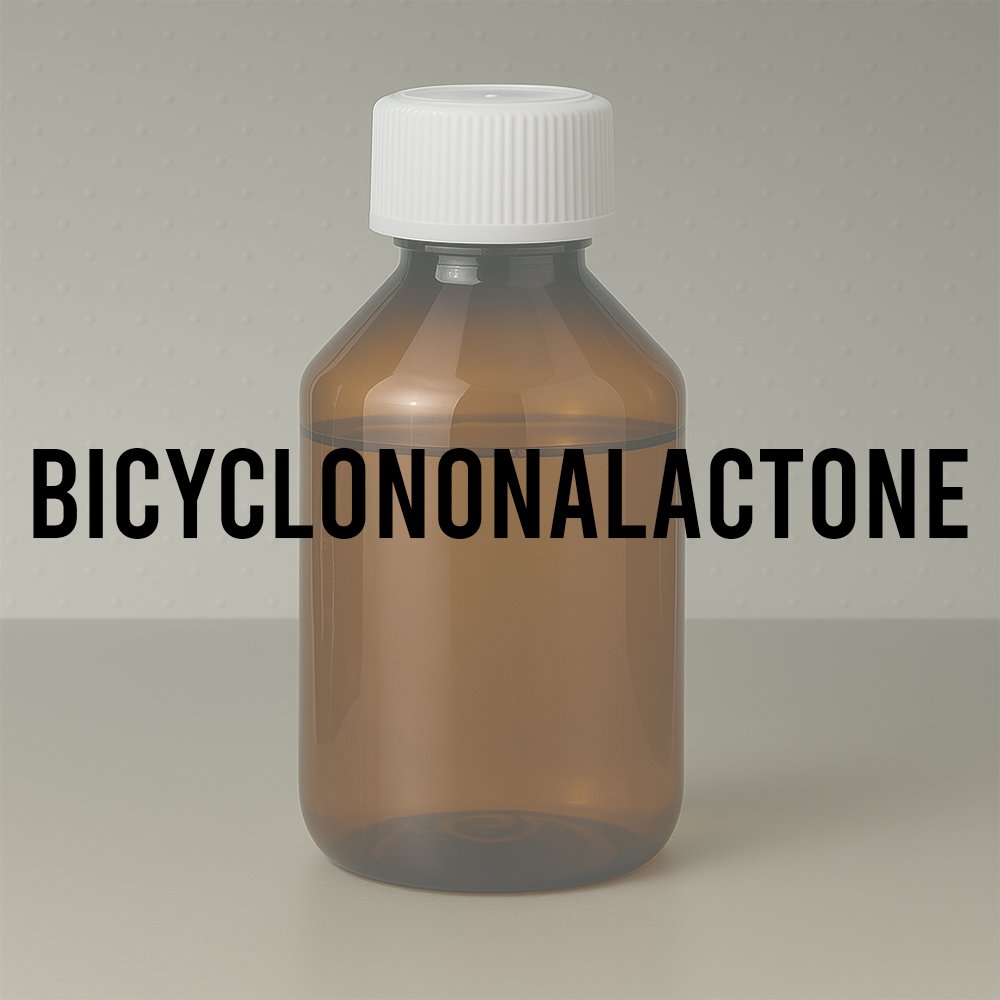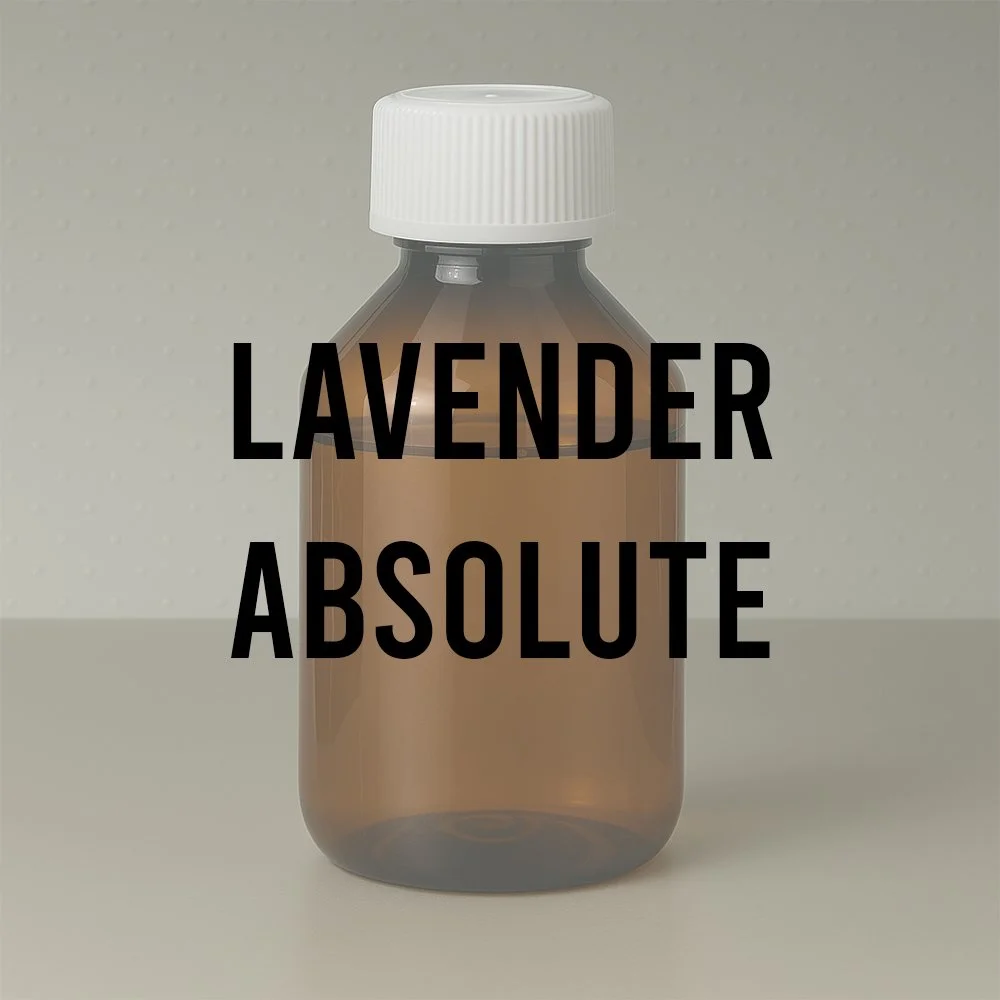Technical Ingredient Overview
🔎 Chemical Name — Octahydro-2H-chromen-2-one
🧪 Synonyms — Bicyclononalactone, 2H-1-Benzopyran-2-one, octahydro-, Octahydrocoumarin
🧬 Chemical Formula — C9H14O2
📂 CAS — 4430-31-3
📘 FEMA — 2790
⚖️ MW — 154.21 g/mol
📝 Odor Type — Sweet, creamy, lactonic
📈 Odor Strength — Medium
👃🏼 Odor Profile — Creamy, coconut-like, warm, coumarinic, milky, balsamic
⚗️ Uses — Fine fragrance, personal care, flavor applications (FEMA approved)
🧴 Appearance — Colorless to pale yellow oily liquid
What is Bicyclononalactone?
Bicyclononalactone, also known as Octahydrocoumarin, is a saturated lactone structurally derived from coumarinthrough full hydrogenation. Its chemical structure consists of a bicyclic system forming a saturated chromanone core, which eliminates the aromaticity and phototoxic concerns typical of coumarin derivatives. It is primarily employed in perfumery for its creamy, sweet-lactonic scent and has recognized utility in flavor applications.
Historical Background
The development of Bicyclononalactone, also known as Octahydrocoumarin, traces back to the post-war period of synthetic fragrance innovation, when chemists began systematically hydrogenating aromatic compounds to reduce toxicity and enhance stability. Its parent compound, Coumarin—a naturally occurring benzopyrone first isolated in 1820 from Dipteryx odorata (tonka bean) by Vogel—had long been a cornerstone of perfumery due to its warm, almondy sweetness and ability to round out floral accords (Sell, 2019).
However, coumarin faced increasing regulatory scrutiny in the mid-20th century due to its hepatotoxicity when ingested, leading to its restriction in food (FDA ban in 1954) and cautious use in cosmetics. This drove perfumers and chemists to explore structurally related but non-aromatic analogues with similar olfactory properties but improved toxicological profiles.
Octahydrocoumarin was synthesized by complete hydrogenation of the aromatic system in coumarin, resulting in a saturated bicyclic lactone with no double bonds in the ring. The exact patent and year of discovery are difficult to attribute due to its relatively straightforward chemical transformation; however, such hydrogenation procedures were industrially optimized during the 1940s–1950s, particularly within the European and American fragrance industries (Arctander, 1960).
The compound rapidly gained attention for its sweet, creamy, coconut-like scent and its non-allergenic character, making it a suitable candidate not only for fine fragrance but also for toiletries and food flavors. Its approval under FEMA GRAS (No. 2790) marked its dual significance in both the fragrance and flavor sectors.
In perfumery, Octahydrocoumarin offered a photostable, long-lasting, and non-sensitizing alternative to coumarin and other linear lactones, and was used as a softening agent in many formulations during the late 20th century. It especially found favor in the rise of solar, creamy florals, and milky gourmand notes of the 1970s–1990s, including tropical-style feminine fragrances and musk-forward bases.
Its use continues today in perfumery as a background enhancer and texture-modulating molecule, particularly valued for its softness, longevity, and regulatory safety.
Olfactory Profile
Olfactory Family: Sweet lactones / creamy musks
Main Descriptors: Milky, coconut, coumarinic, creamy, soft balsamic
Volatility: Low to moderate
Tenacity: Excellent — long-lasting on blotter and skin
Fixative Role: Moderate — improves roundness and longevity in lactonic and creamy accords
Applications in Fine Fragrance
Bicyclononalactone is highly appreciated in milky floral, amber, and tropical gourmand accords. Its profile allows it to round out sharp fruity top notes or add smoothness to woody-musky drydowns. It pairs exceptionally well with:
Tonalide and Galaxolide (for soft musky lactonic blends)
Gamma-nonalactone or delta-decalactone in coconut/peach accords
Benzyl salicylate, vanillin, methyl anthranilate (as a bridge in floral compositions)
Notable appearances (unconfirmed but likely) include creamy tropical or solar florals, vintage amber blends, and soft skin-scent perfumes.
Performance in Formula
Blending: Highly stable and compatible across fragrance types
Diffusion: Smooth, low projection but excellent bloom in warm skin conditions
Fixative strength: Softens and extends lactonic and floral notes without overpowering
Compatibility: Excellent with alcohol, oils, esters, and musks
Industrial & Technical Uses
Flavorings (FEMA GRAS 2790): Imparts creamy, coconut, or dairy-like effects in food and beverages, albeit at low ppm concentrations
Cosmetics and toiletries: Creams, shampoos, deodorants, and body lotions as a warm lactonic softener
Laundry and fabric care products: Adds milky softness and warm nuance to musky clean bases
Regulatory & Safety Overview
IFRA status: Not prohibited or restricted under IFRA 51st amendment; always verify use concentrations in final formula via IFRA Categories.
FEMA GRAS: 2790 — approved for flavor use
EU Cosmetics Regulation: Permitted — no mandatory labeling required
GHS Classification: Not classified as hazardous under standard use conditions
Allergen Risk: Low — Not included in the 26 EU fragrance allergens requiring labeling
REACH status: Registered — low concern for toxicity or sensitization
Toxicology: Considered of low acute toxicity; not phototoxic; no mutagenicity reported in standard assays
References
Arctander, S. (1960). Perfume and Flavor Chemicals (Aroma Chemicals). Montclair, NJ.
Sell, C. (2019). The Chemistry of Fragrances. Royal Society of Chemistry.
PubChem. (n.d.). Octahydro-2H-chromen-2-one. Retrieved April 2025, from https://pubchem.ncbi.nlm.nih.gov
IFRA. (2024). IFRA Standards – 51st Amendment.
FEMA. (2023). FEMA GRAS 2790. Retrieved from https://www.femaflavor.org










